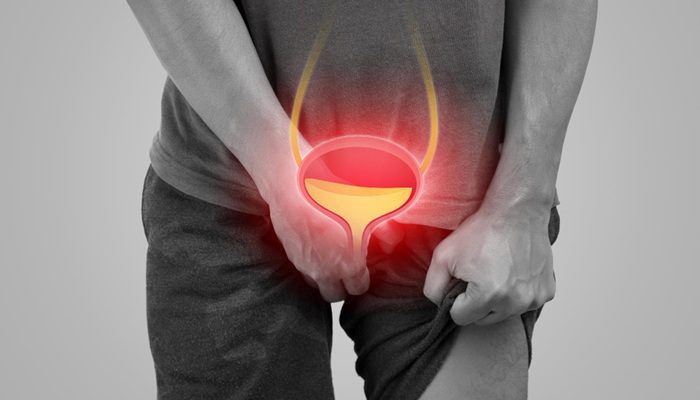Benign prostatic hyperplasia (BPH), or an enlarged prostate, is a common condition among men as they age. When the prostate gland grows larger, it can compress the urethra, leading to symptoms such as frequent urination, weak urine flow, and a feeling of incomplete bladder emptying. These symptoms often interfere with daily activities and reduce quality of life.
Today, men with an enlarged prostate no longer need to worry about undergoing major surgery. Thanks to advancements in medical technology, Thulium Laser Enucleation of the Prostate (ThuLEP) has emerged as an effective and minimally invasive solution to treat BPH without incisions.
ThuLEP is a minimally invasive surgical procedure that uses highly precise laser energy to remove excess prostate tissue effectively. This helps restore smooth urine flow and improves the patient’s quality of life. The procedure is performed through the urinary tract using a special instrument called a cystoscope, without the need for external incisions—making it a safer and more comfortable option for patients.
This advanced laser technology is now available at Mandaya Royal Puri Hospital, a medical center known for its modern urology facilities and experienced specialists.
Contents
Advantages of ThuLEP Laser Technology for Enlarged Prostate
The ThuLEP laser technique offers several advantages over conventional prostate surgery. It not only effectively relieves urinary symptoms but also ensures greater comfort, faster recovery, and lower risk of complications. Below are the main benefits of ThuLEP:
1. Fast recovery with minimal pain
ThuLEP is a minimally invasive procedure, meaning it requires no large incisions. The treatment is performed through the urinary tract using a camera and laser fiber, resulting in minimal tissue trauma.
Patients typically recover faster than with open surgery, with a short hospital stay (usually one night). Most can return to normal activities within 1–2 weeks, experiencing significantly less pain.
2. High precision and safety for surrounding tissue
Thulium laser technology allows for precise cutting and vaporization of prostate tissue, enabling the surgeon to remove excess tissue without damaging nearby structures.
Its specific wavelength minimizes thermal effects on tissues, reducing the risk of thermal injury and promoting faster healing.
3. Minimal blood loss during the procedure
One of ThuLEP’s key advantages is minimal bleeding. The laser energy seals small blood vessels as tissue is removed, lowering the risk of bleeding—making it a safe option for elderly patients or those with bleeding disorders.
4. Shorter and more efficient procedure
The ThuLEP procedure typically takes about 2–3 hours, depending on prostate size. After surgery, patients usually require a urinary catheter for only 1–2 days. Compared to open surgery, ThuLEP offers a shorter operation and faster overall recovery time.
5. Long-lasting results with low recurrence rate
ThuLEP allows for complete removal of prostate tissue up to the capsule, minimizing the chance of regrowth. This provides long-term relief from urinary symptoms such as improved urine flow, reduced frequency, and greater comfort when urinating.
6. Low risk of sexual dysfunction
Unlike some other prostate surgery methods, ThuLEP has a very low risk of sexual side effects. The laser’s precision enables surgeons to protect critical nerves around the prostate, helping maintain sexual function after the procedure.
How the ThuLEP Procedure Is Performed
Here are the steps typically involved in the ThuLEP procedure:
- Performed under general anesthesia without external incisions: ThuLEP is a minimally invasive treatment that does not require external cuts, ensuring safety and comfort.
- Insertion of cystoscope through the urinary tract: The surgeon inserts a thin tube with a camera (cystoscope) through the urethra to access the enlarged prostate.
- Use of thulium laser to remove excess tissue: A thulium laser fiber is used to vaporize and remove enlarged prostate tissue with high precision.
- Safe for surrounding tissue: The laser delivers energy in a controlled manner, allowing effective tissue removal while preserving surrounding structures.
- Minimal risk and faster healing: The laser’s wavelength generates minimal heat, reducing the risk of complications and speeding up recovery.
- Procedure duration and post-treatment care: The surgery usually lasts 2–3 hours. Afterward, a urinary catheter is placed and typically removed within 1–2 days.
ThuLEP Specialists at Mandaya Royal Puri Hospital

The ThuLEP procedure at Mandaya Royal Puri Hospital is performed by an experienced team of urologists, including Prof. dr. Ponco Birowo, Sp.U(K), Ph.D.
Prof. Ponco is a distinguished urology specialist with expertise in treating various urological conditions, including benign prostatic hyperplasia. He completed his medical and urology specialization training at the University of Indonesia, followed by subspecialty training in andro-urology.
He also serves as a Professor at the University of Indonesia and earned his Ph.D. from Hannover Medical School, Germany, graduating Magna Cum Laude.
Conditions treated by Prof. Ponco include:
- Benign prostatic hyperplasia (BPH)
- Kidney stones (RIRS, PCNL, and others)
- Bladder disorders
- Other kidney abnormalities
Prof. dr. Ponco Birowo, Sp.U(K), Ph.D is available at Mandaya Royal Puri Hospital:
- Tuesday: 16:00 – 18:00 WIB
- Thursday: 16:00 – 18:00 WIB
If you wish to consult about ThuLEP treatment or benign prostatic hyperplasia (BPH), visit Mandaya Royal Puri Hospital.
For your convenience, you can use the WhatsApp Chat, Book Appointment feature, or download the Care Dokter app from Google Play and App Store to manage your visit, check queue numbers, and get complete information about our medical services.



